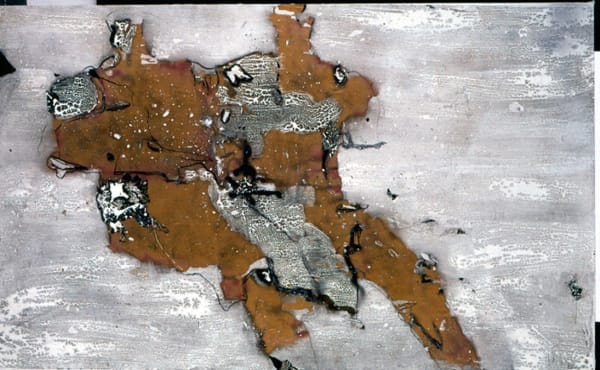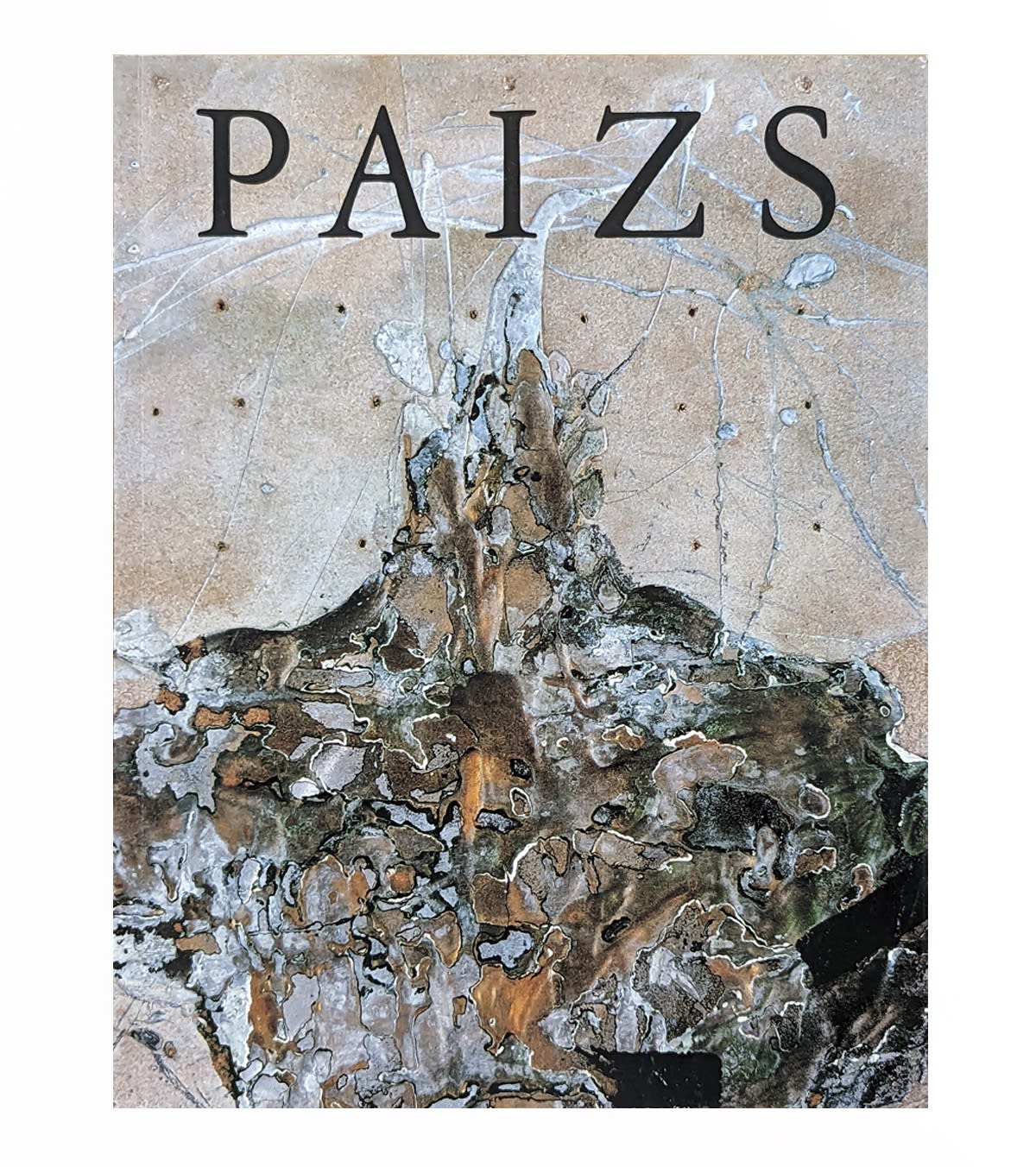László Paizs: Embodiment
WESTWOOD GALLERY NYC presented a premiere solo U.S. exhibition for László Paizs, a leading Post-Modern Hungarian artist. On view were mixed media paintings from 1994-2002 and acrylic block sculptures from 1986-1999. Mr. Paizs is considered one of the most important Contemporary artists in Hungary with a career spanning fifty years. His artwork integrated Realism, Abstraction, Figurative, Non-figurative, Minimalism and Pop-art into a new aesthetic. Ironically, although Mr. Paizs was censored in the early part of his career, today his artwork is in the collections of many museums and collectors in Hungary and throughout Europe. He has received many commissions and public art projects, in addition to awards and prizes for his work.
Paizs began his studies in drawing in 1948 and later learned under recognized art professors at the College of Applied Arts in Budapest from 1954 to 1959. He earned a living in college by painting still lifes and producing murals. One of his first commissions was a tapestry design, which was presented to Poland as an official gift from the Hungarian People's Republic. Hungarian art had been stagnating throughout the 1950s and became slightly liberated in the 1960s. Although few Contemporary artists were allowed to exhibit avant garde or abstract artwork openly, László Paizs was at the beginning of his exploration of experimentation. In 1966, he exhibited non-figurative oils at the Studio of Young Artists in Budapest, along with other emerging avant garde artists, but the exhibition caused controversy in the press. In 1967, he abandoned his oil on canvas techniques and created new work with leather, fabric, and metal on fibreboard. Paizs wanted to move away from reality based artwork and into textural interweavings with mystic symbols. During this time, Hungarian artists who wanted to exhibit their artwork were required to submit their portfolio for review to the reigning cultural committee. Paizs' textural work was first accepted for a group exhibition, but it was later taken down and removed by higher authorities. Paizs' artwork was locked in a storeroom, along with other artists' work deemed 'objectionable'. In the 'Socialist Realist' view these artists' work gave no reference to the real world, it was too liberal, free-thinking and decadent, against the tenets of Communism. As Paizs recalled the censorship incident, "This was too big a blow; some of us never really recovered from it. Few of us could really get their feet on the ground in the society of the time. Some of us abandoned the art world; others tried to pull themselves together as best they could; others, after a few years just vegetating, left the country… I knew there was no way I was going to be able to exhibit those pictures, and everything to do with painting, everything I had learned thus far, began to seem hopeless."
In 1969, Paizs was bothered by the notion that his artwork was gathering dust in a damp cellar and wanted to protect them from rotting away. After seeing insects preserved within plexiglass in a window display of Tanért (a state-run store), Paizs experimented with liquid plexi for many years, sometimes with dangerous consequences. He succeeded in creating sculptures that encased textiles and symbolic or politically questionable objects in clear plexiglass blocks. For many years Paizs' plexiglass sculptures were discussed in newspapers, publications and art circles, causing critics to question, contemplate, admire and reject his work. In the catalogue for Paizs' 1971 exhibition in the Adolf Fényes Gallery (a gallery for artists whose works were considerable 'tolerable', but required self-financing because it was not supported by the state), the introduction stated: "… Man casts the things he fears in plexiglass, he turns the things he fears into art", (László Lakner, Contemporary artist).
Throughout Paizs' four decades of creating art, he struggled through barriers that were placed in front of him, whether it was government control over the arts or his own consternation with experimentation of various media and forms of expression. Mr. Paizs remained committed to his passion for art, questioning, changing and revolting against the status quo. During his career he has gone from painting in oil and mixed media to textile work to sculptures in plexiglass and monumental metal sculpture and commissions. His recent work from the past three years reflects his journey, settling back into painting with oil and a new textural addition, colored polyester. His paintings resonate an archaic, Pompeii-like discovery of time-worn figures heavily painted on canvas. Mr. Paizs believes that the paintings we see in museums, which are hundreds of years old, still appear fresh, like yesterday. However, his work is a reflection of the question: If a painting was unearthed after our civilization is gone, and re-discovered -- how would it appear?
Tibor Wehner, art critic and historian, writes the following about Paizs' recent paintings, "While in the eighties there was a sense of drama and foreboding, in the second half of the nineties the work is more tempered and looks back to the past. The metallic glimmer of the polyester with its blend of gold and silver powder exhibits a decadent profundity, and the peculiar glow and intense lustre of these monumental pieces reinforces the conviction that we are face to face with the heroes of a long-gone, forgotten golden age, an age that has sunk into the sea. The simultaneous presence of a technique that is both archaising and ground-breaking creates a tight sense of unity." In all its intricacy and complexity, the art and world of László Paizs comes forward as a coalescent whole that spanned the entire period in twentieth-century Hungarian art from the late fifties until the present day, incorporating progressive endeavors while remaining essentially unique. Notwithstanding the changes it underwent, it always remained a single entity following an unbroken course."





